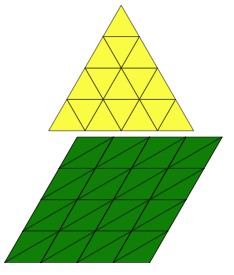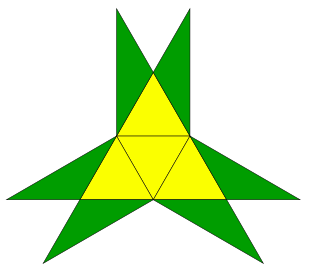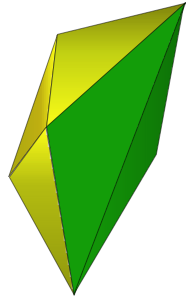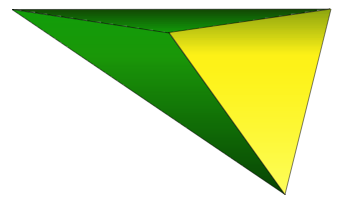Skip over navigation
Suppose we start with two types of triangles:


We will be putting them together to make 3D shapes.
Sometimes you need tabs to glue them together so you cut those out like these (here is a sheet of triangles with tabs):






Or search by topic
Number and algebra
Geometry and measure
Probability and statistics
Working mathematically
Advanced mathematics
For younger learners
Triangular Faces
Age 7 to 11
Challenge Level 





Suppose we start with two types of triangles:
and we have lots of them ready to cut out and use (you could print off this sheet).

We will be putting them together to make 3D shapes.
Sometimes you need tabs to glue them together so you cut those out like these (here is a sheet of triangles with tabs):

Well here is an image of 3D shape number 1 made from 6 green and 4 yellow triangles:

and here is a net that could be used to make it:

Have a go at making this or something similar. You might make it from a net or just by sticking the triangles together.
-----------------------------------------------------
Here is an image of 3D shape number 2:

This was made from 6 yellows and 2 greens.
Can you try and make it, and work out a net for it?
-----------------------------------------------------
Here is the last one of mine to try, made from 4 green and 2 yellow:

See if you can make this one and discover a simple net for it.
You may also like
Little Boxes
How many different cuboids can you make when you use four CDs or DVDs? How about using five, then six?

